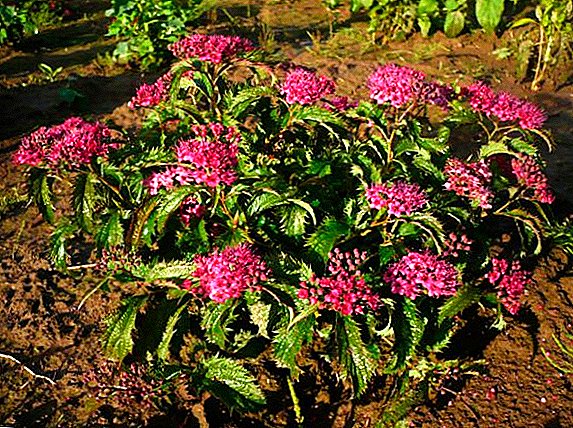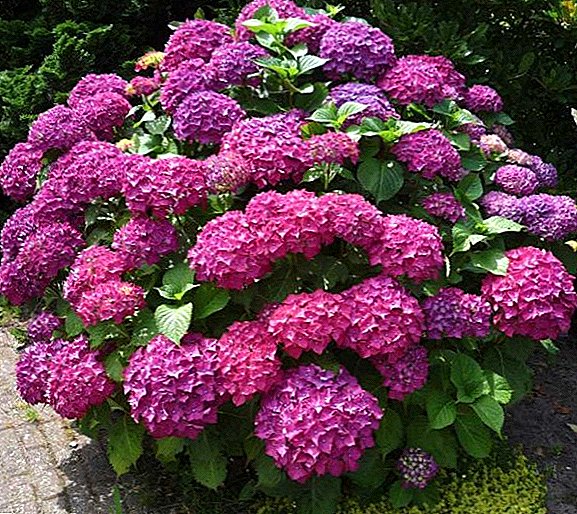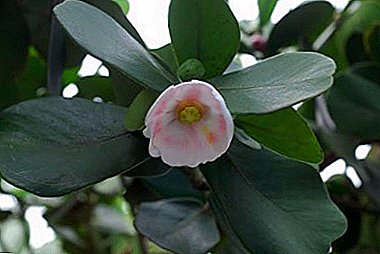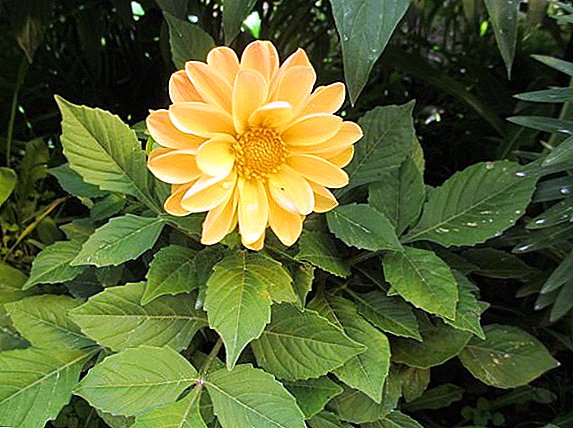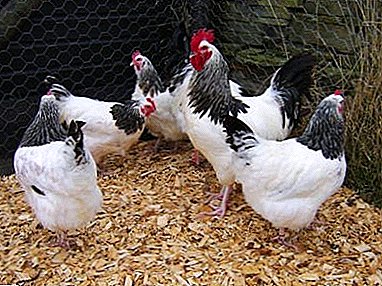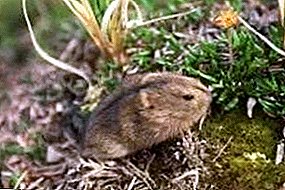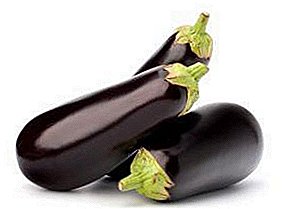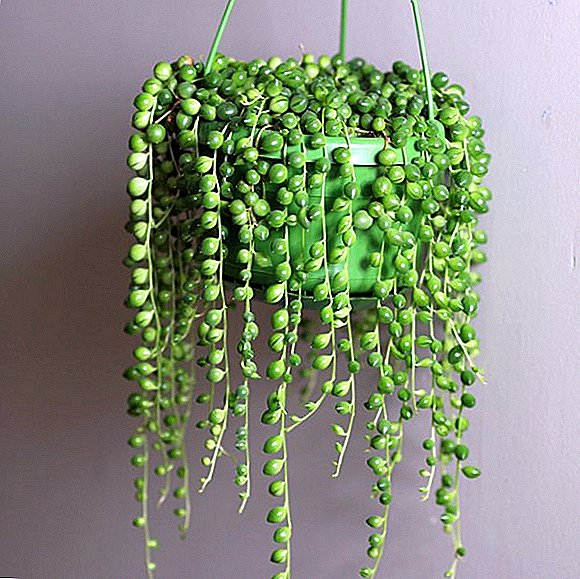 Rowley's dacha belongs to succulent plants and, thanks to its spherical leaves, has a truly exotic appearance that cannot be confused with anything. Thanks to the ability to accumulate moisture, such a flower is absolutely unpretentious in care and can easily beautify as any interior in the house, and become the "highlight" of the flower bed.
Rowley's dacha belongs to succulent plants and, thanks to its spherical leaves, has a truly exotic appearance that cannot be confused with anything. Thanks to the ability to accumulate moisture, such a flower is absolutely unpretentious in care and can easily beautify as any interior in the house, and become the "highlight" of the flower bed.
Biological characteristic
Rowley's dacha, or as it is also called the Green Pearl, hails from the arid mountain regions of Namibia, which causes its moisture resistance, unpretentious care, and resistance to climate change. This flower is a perennial plant of one of the most numerous representatives of the genus of crusaders of the Astrov family.

Rowley's dacha can be grown as an ampelnaya indoor flower, and as a ground cover plant. At the same time, the difference in the achieved sizes will be visible: in home conditions such a plant will have a size of no more than 50-70 cm in length, whereas in open soils the flower can reach two meters in length.
The main feature of this plant is its long and rather fragile stems, which take root in the internodes. The leaves are dark green in color, have a spherical shape, with a diameter of about 1 cm, with a slight sharpening at the ends. Due to its dense structure and multi-layered tissues, such leaves are able to delay the evaporation of liquids and, therefore, can easily do without watering for a long time. To date, a hybrid of this variegated flower has been bred, the color of the leaves of which differs from the standard and has light spots on a green background.
Important! Rowley's Groundsel is a poisonous plant whose juice can lead to serious metabolic disturbances and damage to the liver tissues, so it is strongly not recommended to grow such plants in the presence of children or domestic animals.
The flowering period of this plant comes at the end of spring. On the stems appear long and thick flower stalks, which bloom with tubular flowers, in their appearance resembling dandelion blossoms, but having a pale pink hue and a delicate aroma with notes of cinnamon.
| Characteristic | Description |
| Root system | horizontal type |
| Stem | in the form of creeping shoots |
| Leaf shape | spherical, with a diameter up to 1 cm |
| Leaf color | green, green with light spots |
| Flower shape | tubular flowers collected in baskets |
| Color | light pink |
What you need to create conditions at home
There are many succulent species of the baptismal, but they all need the same conditions. Despite its remarkable properties, which include a good tolerance of drought, low humidity and a small amount of light, in order to get a spectacular waterfall of pearl threads, a little work should be done on the optimal conditions for the growth and development of this plant.
Did you know? According to national signs, single women who collect succulents, better married.
Lighting
When growing Rowley's honeyberry tree at home, an important factor in preserving the decorative appearance of this flower is the correctly chosen location and a sufficient amount of lighting. With an excess amount of light, the leaves of this plant will acquire a red-maroon color, and with a lack of - the stems will stretch, and the internodes will be significantly longer, which will give the flower a loose appearance. Another unpleasant consequence of poor lighting will be the lack of flowering and reduction in leaf size.

The best is considered bright diffused light, at least 12 hours a day. When choosing a place for pots should avoid the north side of the house. In winter, when the day is reduced, this flower requires additional artificial lighting. In this case, it is not recommended to use ordinary incandescent lamps, since they have a low light output, the air is very hot and there are no blue rays in their range. It is better to use various types of fluorescent lamps or metal halide, which today are the most adapted lamps for plant lighting.
Temperature and humidity
The allowable temperature for the Rowley gibber varies by season. In the warm period, beginning in spring and ending in mid-autumn, this flower develops perfectly in standard room conditions at a temperature of + 20 ... + 26 ° С. In winter, plants have a period of rest, therefore it is recommended to lower the ambient temperature within + 15 ... + 18 ° С.

It is important to understand that, with all its unpretentiousness, this flower does not tolerate wintering in an unheated room, and the air temperature below + 12 ° C can lead to its death. Also in winter, you should choose places under the flower, which will be located at some distance from the working batteries.
At elevated temperatures during this period, the plant will respond by dropping foliage. Rowley's dacha does not require high humidity and feels good in dry air conditions, so the spray gun is most often used only to remove dust accumulated on the leaves.
How to care at home
Decorating your home with such an unusual plant, you should also familiarize yourself with the basic rules for the care of this flower.
Did you know? Today, succulents are considered the most fashionable decor home interior.
Watering and feeding
Even during the active growing season, when seeds ripen and prepare for flowering, excessive watering can be detrimental to this succulent. The soil in the tank with a flower should be only slightly moist, but not moist. In this regard, watering is carried out only after the complete drying of the top layer of soil and only in small portions. It is recommended to carefully check the soil moisture with a wooden stick before applying water.
The irrigation scheme also depends on the season:
- The period of active watering begins in the middle / end of March and lasts until September. During this time, the soil in the pot should be constantly moist, and the watering itself should be carried out at least once every 2-3 days.
- The period of preparation for winter - during the month, the amount of watering is reduced to 1 time in 6-7 days.
- Dormant period - depending on the temperature regime, watering is either completely removed for the entire dormant period of the plant (on condition of cool air), or the soil is periodically moistened with a spray gun (in the conditions of wintering in the warm).
An important factor is also the quality of water - water from under the tap is preliminarily freed from chlorine by settling for 2-3 days. For introduction of top dressing the period of active growth and development of a plant is used. 1-2 times a month, it is recommended to feed the flower with complex mineral fertilizers for succulents or universal mixtures with a small amount of nitrogen.
Pruning
The annual growth of Rowley's Ganer is about 20 cm, which is not a big indicator. Since the spectacular appearance of this flower is based precisely on its long, falling stems, no one performs pruning once again. An exception is the desire to strengthen branching and form lateral processes — pinching the tips of the shoots is done for this purpose.
The best time for pruning is considered the stage of active vegetation in the spring period - the duration of the warm season ahead will enable the flower to be fully renewed.
Important! It is not recommended to frequently move the flower from place to place or keep it in a draft, as the flower's response may be a growth arrest or dropping foliage.
Transfer
The frequency of transplantation depends on the age of the plant:
- young flowers need to be transplanted annually (the process itself takes place in spring);
- adult flowers are transplanted as the root system grows or the shoots fill the pot — usually a transplant takes 1 to 3–4 years.

Conducting a transplant may also arise when it is necessary to update the soil mixture, and for this, the following recommendations should be taken into account:
- When transplanting a plant, it is necessary to handle the stems very carefully, as they have a fragile structure and break off easily.
- The size of the capacity for a flower should exceed the previous minimum by 5-8 cm.
- To avoid stagnation of water, drainage is laid on the bottom of the pot in the first layer.
- As a soil mix, it is recommended to use either ready-made land for succulents or cacti, or to make it yourself, mixing equal parts of humus, leaf soil, peat, sand and vermiculite.
Over time, the plant begins to lose its decorative appearance, so it is recommended not to replant such adult specimens (since this procedure will not be able to return the flower to its former appearance), but to update them. To do this, take a few cuttings, the length of which is 5-7 cm and pressed to the pre-moistened earth. After 5-7 days, the young shoots begin to take root.
Important! Considering the poisonous properties of this flower, it is recommended to wear rubber gloves when handling the plant.
Breeding
The reproduction process of this succulent is carried out fairly easily and at a fast pace. Let us consider below the main methods of reproduction of Rowley's gadget at home.
Dividing bush
The method of reproduction by dividing the bush (or rooting cuttings) can be carried out when there is already one adult flower in the house. In this case, a small pot is placed near the overgrown Rowley's gooseberry, and several shoots are pinned to the soil surface.

After that, the place of attachment to the ground is sprinkled with earth and systematically watered. Usually, during the first week of cutting, new roots are allowed, after which they are separated from the mother bush and the container with the plant is put in its permanent place. Experienced gardeners are advised to plant several plants at once in one pot at the same time, which will immediately give pomp and showiness to a young flower.
Cuttings
Under breeding conditions, stem cuttings will require segments of shoots whose length is not less than 5-6 cm. Rooting is carried out in a previously prepared container with moistened soil. Top cuttings a little sprinkled with earth and constantly watered. The first roots on the shoots appear already in the first week. For the formation of a lush bush is recommended to plant several cuttings in one pot at once. The best time for breeding is considered to be the warm season (spring-summer), which will help pass the adaptation less painful. During rooting, regardless of the breeding method, the air temperature should be at + 14 ... + 17 ° С.
Read more about how to care for succulents at home.
Seeds
When reproducing Rowley's chickens by the seed method, it is recommended to use only freshly harvested seeds, and the procedure itself should be performed in early spring.
Reproduction is carried out in several stages:
- in the selected tank pour drainage layer of 3-4 cm;
- after pouring a layer of soil mixture (the same as when transplanting);
- from above by scattering (without pressing into the soil) sowing flower seeds;
- then another thin layer of substrate is poured;
- the container is covered with plastic film or glass, which creates the effect of a greenhouse;
- airing and removing condensate are carried out several times a day;
- soil mixture is systematically moistened;
- germination temperature - + 20 ... + 23 ° С.
After the germination of the first seedlings and the appearance of 2 sheets on them, such plants swoop down and sit in different containers.
Possible difficulties in growing
Rowley's dacha has another strong feature - it has strong immunity to almost all vegetative diseases, therefore, when faced with diseases of this flower, it is worth remembering that the first reason for this situation is improper plant care or the attack of insect pests. 
Diseases
There are several common diseases that a grower can face.
Rapid diagnosis of the disease and timely action will help to get rid of the disease easily and with minimal losses:
- Gray rot - occurs when excessive watering, low temperatures or low light. First of all, it affects the root system of the plant, a gray plaque forms on the surface of the stem, the leaves become sluggish. As a treatment for this disease, a plant is transplanted into a new soil mixture, and the rhizomes are pretreated with a fungicide solution. In more advanced cases, healthy parts of shoots are rooted. As a preventive measure, it is recommended to monitor the maintenance of the flower.
- Mealy dew - a whitish coating appears over the entire surface of the plant. As a treatment, pruning of affected plant fragments and treatment with fungicides 3-4 times are carried out. The lack of timely treatment leads to a loss of decoration and death.
See also the description and photo of popular plants, succulents for home conditions.
Pests
Another nuisance can be a raid of insect pests, among which are most often encountered:
- Pelargonium greenhouse aphid - almost all above-ground parts of the flower are affected (yellowing of the leaves, brown color of the inflorescences). As a treatment, Rowley's honeyberry is treated with insecticides. Preventing the onset of such pests includes adjusting humidity to an average level and regular airing.
- Spider mite - It manifests itself in the form of the formation of a thin web on the inner side of the leaves, the leaves become brown. Insecticides are used as the main treatment.
- Mealybug - such pests deplete the plant, constantly feeding on its juices. Most often they can be found by laying eggs on the surface of leaves. To get rid of parasites, the whole flower is treated with a weak soap or alcohol solution. In more advanced cases, karbofos emulsion is used.
In general, Rowley's Rogue is absolutely unpretentious in the care and will not cause any trouble in the content. Instead, you can get a truly unique plant, which for many years can be the original decor of any home.


